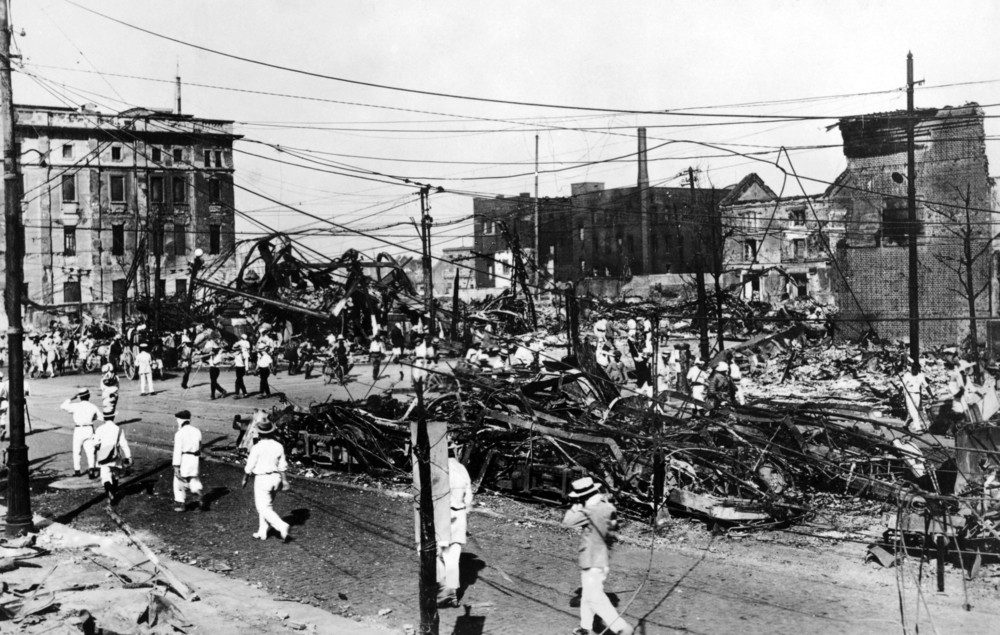A Growing Concern
Rumours about a massive earthquake set to strike Japan on July 5, 2025, have been circulating widely across social media platforms in Japan and abroad. This predicted disaster is not backed by scientific evidence, yet the speculation has grown into a source of genuine concern, especially among tourists and residents in disaster-prone areas. At the heart of the panic lies a manga created decades ago, which some claim to have forecasted the 2011 Tohoku Earthquake—and now allegedly predicts another catastrophe. In this blog, we separate fact from fiction, explore the roots of these fears, and discuss the very real risks Japan faces from natural disasters.
The Origins of the July 2025 Earthquake Rumour
The rumour traces back to Japanese manga artist Ryo Tatsuki (aka “Tatsuki Ryo”), who published a manga in 1999 titled The Future I Saw (‘Watashi ga Mita Mirai’ in the original Japanese title). In it, she documented prophetic dreams as part of a “dream diary.” Of particular note was the book’s cover, which bore the ominous statement: “A major disaster will happen in March 2011.” After the 2011 Great East Japan Earthquake hit, the manga gained cult status for its alleged predictive accuracy.
In 2021, a revised and expanded edition titled The Future I Saw: Complete Edition was published. This edition included a new dream from July 5, 2021, describing a massive seafloor eruption between Japan and the Philippines, leading to a devastating tsunami throughout the Pacific Rim. The interpretation by many on social media is that the disaster will occur precisely four years later—on July 5, 2025.
Who Is Ryo Tatsuki? The Manga Behind the Panic
Ryo Tatsuki is not a scientist, but a manga artist. Her work was never intended to be used as a scientific prediction but rather as a unique creative endeavour blending dream interpretation with speculative storytelling. Still, because some claim she predicted the 2011 disaster, her works have attracted a near-mystical reputation among some readers.
The viral nature of her predictions has grown significantly with the internet era. In Japan, dream-based forecasts and supernatural predictions often find fertile ground among the public, especially when amplified by anecdotal evidence and collective memory of real disasters.

The Role of Social Media in Spreading Misinformation
What began as fringe speculation has been amplified on platforms like X (formerly Twitter), TikTok, and YouTube, where hashtags such as #2025Earthquake and #July5Prediction have gone viral. Misinformation thrives in environments where fear meets ambiguity, and the idea of an exact date for a catastrophe is a particularly powerful hook.
Inaccurate claims have had tangible effects. According to multiple reports, travel cancellations to Japan from places like Hong Kong, Taiwan, and South Korea surged after the rumour spread, with some airlines even suspending flights.
Scientific Reality: Can Earthquakes Be Predicted?
The simple answer is no—earthquakes cannot currently be predicted with precision.
Japan Meteorological Agency director Ryuichi Nomura has publicly dismissed the rumour, stating: “Based on current scientific understanding, predicting the exact time and place of an earthquake is impossible.”
While scientists can identify regions of high risk based on tectonic patterns, predicting the specific timing of an earthquake remains beyond current capabilities. Efforts are underway to detect precursors—such as seafloor changes or foreshocks—but these can only provide limited warnings.
Japan’s Real Earthquake Risks: A Tectonic Overview
Japan lies at the convergence of four tectonic plates: the Pacific, Philippine Sea, Okhotsk (a part of the North American plate), and Eurasian plates. This complex positioning creates intense geological activity and makes Japan one of the most disaster-prone countries in the world.
According to Japan’s Cabinet Office:
- 20.8% of all magnitude 6 or greater earthquakes occur in Japan.
- 7% of the world’s active volcanoes are in Japan.
- Disaster damage accounts for 18.3% of global losses, despite Japan’s land mass being just 0.25% of the Earth’s surface.
From the 1995 Great Hanshin Earthquake to the 2011 Tohoku Earthquake and Tsunami, Japan has experienced firsthand the devastating impacts of seismic events.
The Nankai Trough Earthquake: What We Know and Expect
The Nankai Trough lies off the southern coast of Japan and marks the subduction zone between the Philippine Sea Plate and the Eurasian Plate. Earthquakes here tend to be extremely powerful—typically magnitude 8.0 or higher—and have historically caused severe shaking, tsunamis, and widespread destruction.
These earthquakes occur in a cycle of approximately 100 to 150 years, with the last major one striking in 1946 (the Nankai Earthquake). Experts believe Japan is overdue for another, and the potential next event is often referred to as the “Tokai-Tonankai-Nankai triple rupture scenario.”
The Japanese government has modelled worst-case scenarios and estimates that a future Nankai Trough Earthquake could result in hundreds of thousands of casualties and economic losses in the trillions of yen. As a result, extensive preparations, monitoring systems, and public education efforts are ongoing to mitigate the potential impact.

What the Experts Say: Insights from Professor Hiroki Kamata
Renowned volcanic geologist Professor Hiroki Kamata of Kyoto University (https://www.gsm.kyoto-u.ac.jp/en/faculty/301216/) has issued repeated warnings about the real geological threats Japan faces:
- The Nankai Trough Earthquake is expected to occur roughly once every 100 years.
- The last such quake was in 1946, and the next is predicted to occur sometime in the 2030s, with 2035 as the median estimate.
- Probability of occurrence within the next 40 years: 90%.
Kamata warns that the devastation could exceed that of the 2011 quake, affecting a wide area from Shizuoka to Kagoshima, covering the west Japan. He also notes the threat of associated tsunamis reaching heights over 30 meters, equivalent to an 11-story building.
If such a quake occurs, tsunamis could reach coastal areas within 3 minutes. Kamata advises that you need to move as quickly as possible and run to higher ground -at least the 12th floor of a standard building height when you feel a strong tremor, so that your chance of survival can be increased.
In addition to the Nankai Trough Earthquake, the Japanese government and experts warn that other natural disasters are likely to occur in the near future: the Tokyo Inland Earthquake and an eruption of Mount Fuji.
Capital Under Threat: The Risk of the Tokyo Inland Quake
The Tokyo Inland Earthquake, also known as a Tokyo Metropolitan Earthquake, refers to a potential magnitude 7-class earthquake that could strike directly beneath or near the Tokyo metropolitan area. Unlike offshore quakes like those from the Nankai Trough, this type of earthquake would originate from active faults within the inland crust under or near Tokyo, making it especially dangerous due to its proximity to Japan’s most densely populated and urbanised region.
Experts, including Japan’s Earthquake Research Committee, estimate a 70% chance of such an earthquake occurring within the next 30 years. The risk stems from the complex network of faults under Tokyo and the surrounding Kanto region, including the North American and Philippine Sea plate boundary zones. Past inland quakes, such as the 1923 Great Kanto Earthquake (magnitude 7.9), caused catastrophic damage, fires, and tens of thousands of deaths. In the 1923 Great Kanto Earthquake, about 90% of the casualties were due to fire.

While this type of quake is harder to forecast, Kamata warn that its damage could be five times worse than the 2011 disaster, primarily due to building collapse and urban fires.
In response, Tokyo has implemented strict earthquake-resistant building codes, reinforced infrastructure, developed early warning systems, and runs regular disaster preparedness drills for residents. Nonetheless, due to the city’s density and complex urban systems, the risk remains one of Japan’s most critical natural disaster concerns.
Mount Fuji: The Sleeping Giant
Mount Fuji, Japan’s tallest and most iconic mountain, is not only a symbol of beauty and cultural significance but also an active volcano. Standing at 3,776 meters (12,389 feet), it has long inspired artists, poets, and pilgrims. Located about 100 kilometres southwest of Tokyo, Mount Fuji is a popular destination for climbers and tourists, especially during the official climbing season from July to early September.
Though it hasn’t erupted in over 300 years, Mount Fuji remains an active volcano, with the potential to erupt again. Its last eruption occurred in 1707 during the Edo period, known as the Hōei eruption, which deposited ash on areas as far away as present-day Tokyo. Though it has been dormant since, seismic studies and recent geological assessments suggest a constant need for monitoring. Japanese authorities continue to keep a close watch on the mountain’s activity, preparing emergency plans in case of future eruptions.
An eruption could be triggered by a large earthquake, as was the case in 1707, when it erupted 49 days after Nankai earthquake.
What If It Erupts?
Japan’s Cabinet Office estimates a major eruption could eject large amounts of ashfall on wide areas.
Ashfall could:
- deposit on homes, crops, and vehicles
- cause health risks from inhalation
- disrupt transport, power, water systems, and everyday life.
Authorities have developed four-stage ash warning/advisory systems, urging people to shelter or evacuate if ash reaches dangerous levels (>3 cm to >30 cm). Emergency guidelines include ash removal plans, stockpiling, mask distribution, and infrastructure reinforcement.
Because ash doesn’t dissolve naturally and solidifies after rain, its removal must be manual and swift to avoid long-term infrastructural damage.
What should we do to protect ourselves when it erupts?

If You Are Nearby (Yamanashi/Shizuoka area):
- Evacuate immediately if instructed by authorities. Follow local emergency announcements.
- Avoid valleys or rivers, which can channel lahars (mudflows).
- Wear a mask, goggles, and long-sleeved clothing to protect from ash and gases.
- Do not drive unless absolutely necessary—ash can damage engines and make roads slippery.
- Watch out for falling volcanic rocks and listen for rumbling sounds.
If You Are in the Tokyo Metropolitan Area:
- Stay indoors, close windows, and seal gaps to prevent ash from entering.
- Avoid using air conditioning or ventilation that draws outside air.
- Protect electronics and machinery—ash is abrasive and can short out devices.
- Prepare to lose access to transportation, water, or electricity temporarily.
- Have an emergency kit ready with water, food, dust masks, eye protection, and a flashlight.
In addition, monitor announcements or news from official sources like the Japan Meteorological Agency (JMA) or local disaster response teams for real-time updates.
What to Do in Case of an Earthquake
- Protect your head immediately when shaking starts
- Run to higher ground immediately if you’re near the coast and feel prolonged shaking (around 1 minute)
- Get out of the underground if you are in an underground shopping mall or taking the subway due to the risk of blackout or collapse. If a blackout occurs, follow the arrow of the emergency sign to reach an exit door
- Stay informed through official sources such as the Japan Meteorological Agency
Preparedness Over Panic: Government Warnings and Public Advice
Japan’s government continues to invest heavily in disaster preparedness, including early warning systems, community evacuation drills, and infrastructure resilience.
While it is impossible to stop a natural disaster, being informed and prepared greatly increases chances of survival. Kamata emphasises that having the right knowledge and evacuation plans in place is the best defence.
The JMA and Cabinet Office both urge people not to fall for unscientific rumours and instead focus on practical safety preparations.
Impact on Travel and Tourism
As the rumour has spread, the tourism industry in Japan has seen a measurable decline in bookings. Airlines from Hong Kong, Korea, and Taiwan have noted a significant drop in demand for travel in July 2025. Some have suspended routes temporarily due to low reservations.
This reaction underscores the power of misinformation and the importance of accurate public communication, especially in disaster-prone regions.
Conclusion: Facing Real Risks with Real Knowledge
While the idea of a July 5, 2025, earthquake may be emotionally compelling, it is not rooted in science. Japan does face real seismic threats, such as the Nankai Trough and Tokyo Inland earthquakes, and possibly a future Mount Fuji eruption. However, none of these are precisely predictable.
Rather than giving in to fear or unverified predictions, we must trust in science, preparedness, and community resilience. As Professor Kamata and the Japan Meteorological Agency remind us, earthquakes cannot be predicted, but the damage can be mitigated with the right knowledge and action.
So instead of worrying about a manga prediction, take steps today to prepare for the real and ever-present challenges of living on or visiting this beautiful but geologically active island nation.
Now, you understand that you don’t need to worry about the earthquake rumours that are not based on any scientific fact. Just remember what you need to do to protect yourself. Move quickly and stay calm.

